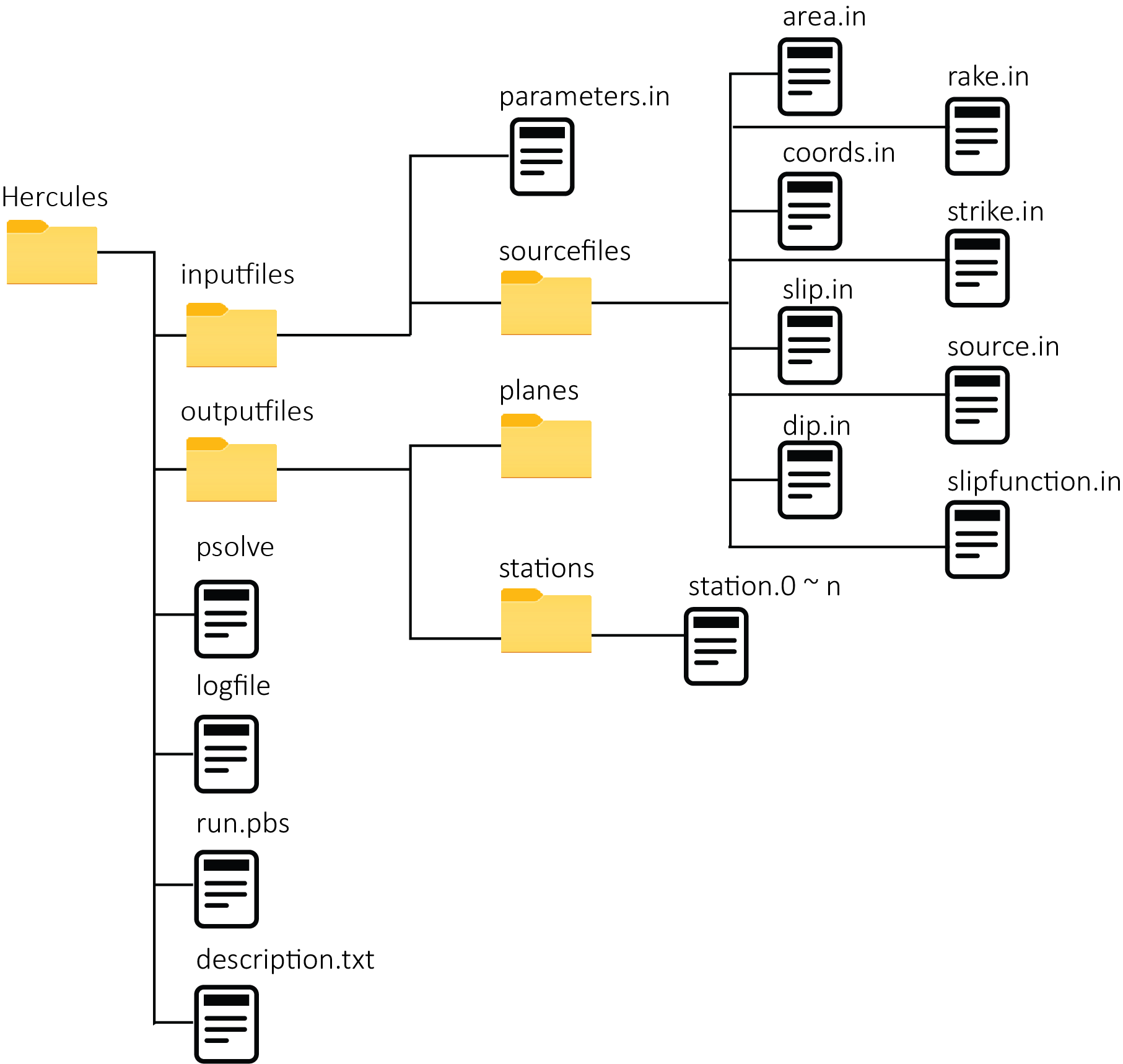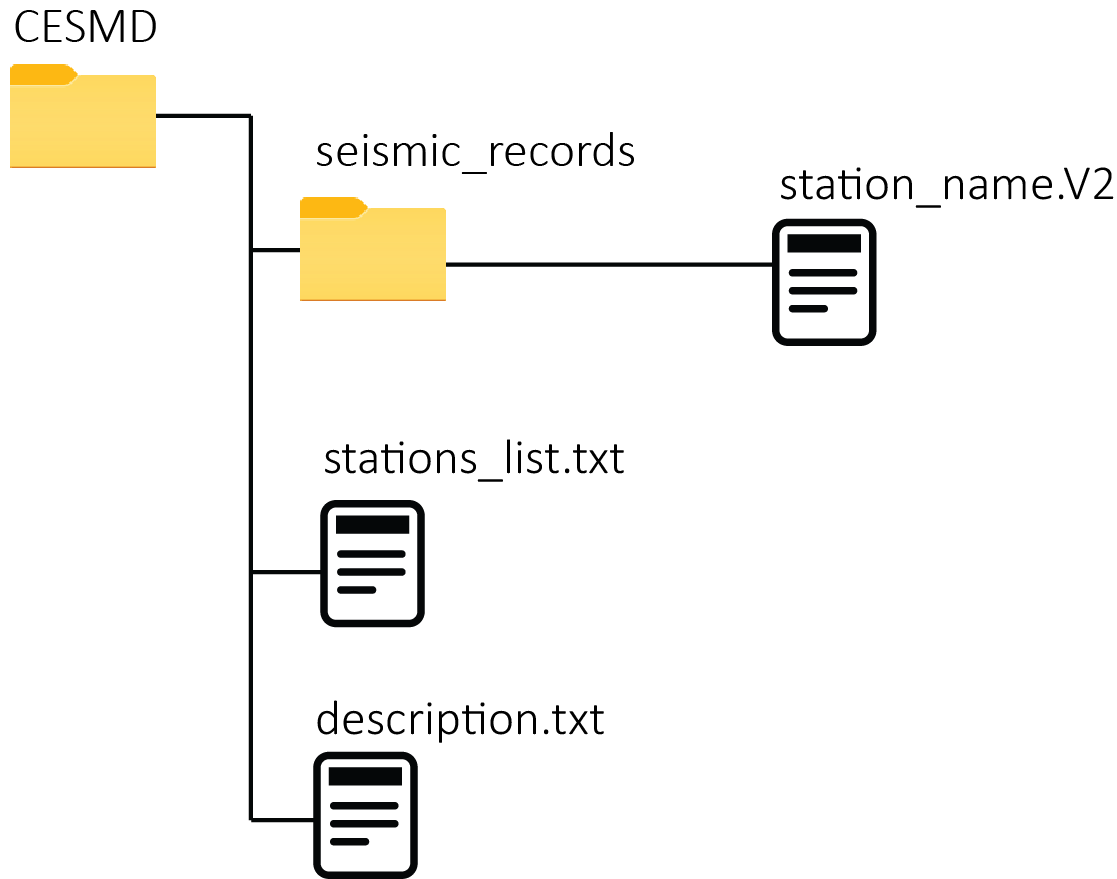Incidents¶
An earthquake incident (or incident for short) is a folder that includes observed or simulated earthquakes with their source and stations details. tsporcess parses all files inside the incident folder and extract the required data. In the following, we explain the incident folders’ details for major ground motion simulation platforms. Please let us know if you need to add your research group incident format into tsporcess.
Hercules¶
Hercules is a simulation software for anelastic wave propagation in highly heterogeneous media due to kinematic faulting. The following figure shows the required files and folders and their arrangements.

The only extra file is description.txt that has several mandatory keys and values. These keys are shown below. The incident name should be a unique name. Incident type is one of the supported incidents, which in this case, is hercules. Horizontal orientations should be perpendecular, and vertical orientation shows the direction that records are considered positive.
# description.txt
incident_name = hercules_1
incident_type = hercules
inputfiles_parameters = inputfiles/parameters.in
source_hypocenter = lat, lon, depth(km)
hr_comp_orientation_1 = degree
hr_comp_orientation_2 = degree
ver_comp_orientation = up or down
incident_unit = cm or m
RWG¶
TBD
AWP¶
TBD
CESMD¶
Center for Engineering Strong Motion Data (CESMD) is a cooperative center established by the US Geological Survey and the California Geological Survey (CGS) to monitor earthquake strong-motion data. Read more here. CESMD provides data in different formats. In this section, we explain Consortium of Organizations for Strong-Motion Observation Systems (COSMOS ) format. COSMOS has 3 different volumes including V1, V2, V3. V1 is raw , unprocessed acceleration data. V2 is processed and corrected acceleration, velocity and displacement records. V3 includes spectra files.
Vol1¶
TBD
Vol2¶
As mentioned earlier, Vol2 format is the corrected and processed version. So we do not need to deal with normal proprocessing (e.g., removing instrument response and baseline correction.) One can download strong-motion data from strongmotioncenter.org .
The following figure shows the required files and folders and their arrangements.

stations_list.txt includes station name, lat, lon, depth of stations that
are located in seismic_records folder. Here is an example of
stations_list.txt:
# stations_list.txt
CIOLI 33.945 -117.924 0
CE13873 33.933 -117.896 0
CE13880 33.909 -117.931 0
CE13881 33.931 -117.956 0
description.txt file requires several mandatory keys and values. These keys are shown below. The incident name should be a unique name. It can be any name, however, we would suggest a very short name, because, you will use the name frequently during the processing, and also it will appear as legends in the figures. Incident type should be one of the supported incidents, which in this case, is cesmdv2. Orientations of different components are read from each seismic record file.
# description.txt
incident_name = cesmdv2_1
incident_type = cesmdv2
You can add any key-value metadata to this file. They will be accessible in the incident metadata attribute. Note that each record unit will be extracted from the record’s file.